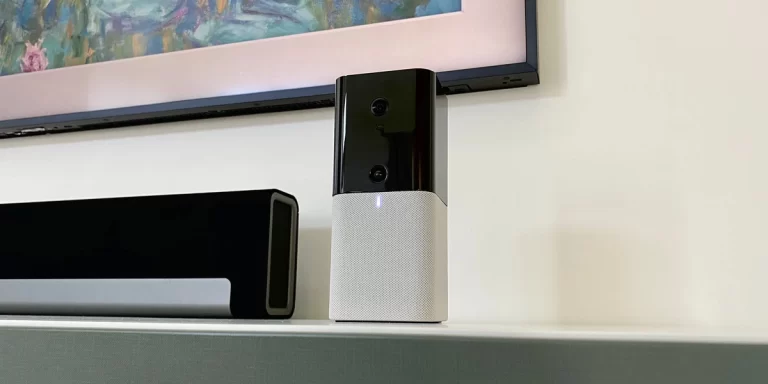What is Energy-Efficient Design? Importance and Principles
What is energy-efficient design? Learn everything you need to know about energy efficient design. Explore innovative strategies, technologies, and practices to achieve a sustainable and eco-friendly future.
What is Energy Efficient Design?
With the increasing concerns about climate change and rising energy costs, energy-efficient design has become a crucial aspect of sustainable living and construction.
Whether you are a homeowner, a builder, or someone interested in sustainable practices, You’ll need to learn about energy efficient design.
At its core, energy-efficient design involves creating structures and spaces that consume minimal energy while optimizing performance and comfort.
The primary goal is to reduce energy consumption without compromising on functionality or occupant well-being.
Energy-efficient design considers various factors, such as insulation, ventilation, lighting, and appliances, to achieve optimal energy usage.
By incorporating sustainable practices, materials, and technologies, energy-efficient design contributes significantly to environmental conservation.
The Importance of Energy Efficiency
Energy efficiency plays a critical role in mitigating the adverse effects of excessive energy consumption on the environment and human health. Let’s explore why energy-efficient design is of paramount importance:
1. Environmental Benefits
Energy-efficient design reduces greenhouse gas emissions, which are major contributors to climate change.
By consuming less energy, we can decrease the demand for fossil fuels and reduce our carbon footprint, thereby preserving the environment for future generations.
2. Economic Advantages
Energy-efficient buildings and appliances save money on utility bills in the long run. Though initial investments may be higher, the energy savings eventually offset the costs, resulting in substantial financial benefits over time.
3. Enhanced Comfort
Energy-efficient designs prioritize insulation and ventilation, leading to consistent indoor temperatures and better air quality. Occupants experience enhanced comfort and well-being in such spaces.
4. Resource Conservation
By using energy responsibly, we reduce the strain on natural resources. Energy-efficient design also encourages the use of sustainable materials, further contributing to resource conservation.
Principles of Energy Efficient Design
To achieve maximum energy efficiency, architects and builders adhere to specific principles when designing buildings or spaces. The following are the key principles of energy-efficient design:
1. Optimal Insulation
Proper insulation is fundamental to energy-efficient design. Well-insulated buildings retain heat during winters and stay cool during summers, reducing the need for constant heating or cooling.
2. Efficient Windows and Doors
Energy-efficient windows and doors prevent heat transfer, ensuring that indoor temperatures remain stable. They are designed to minimize air leakage and reduce energy wastage.
3. Passive Solar Design
Passive solar design harnesses the sun’s energy to provide heating and lighting naturally. It involves orienting buildings to maximize solar gain during winters and minimize it during summers.
4. Energy-Efficient Lighting
Using LED or CFL lighting significantly reduces energy consumption compared to traditional incandescent bulbs. Additionally, incorporating natural light sources helps reduce the need for artificial lighting.
5. High-Efficiency HVAC Systems
Heating, ventilation, and air conditioning (HVAC) systems are major energy consumers. Energy-efficient HVAC systems are designed to optimize performance while using minimal energy.
6. Renewable Energy Integration
Integrating renewable energy sources like solar panels or wind turbines further enhances the energy efficiency of a building, making it more sustainable and self-sufficient.
Energy-Efficient Design in Residential Buildings
Energy-efficient design principles can be effectively applied in residential buildings to create sustainable and comfortable living spaces. Let’s delve into various aspects of energy-efficient design in homes:
1. Passive Design Elements for Homes
Passive design elements involve techniques that utilize natural resources to maintain indoor comfort.
Examples include designing homes with large windows for natural lighting and incorporating thermal mass for temperature regulation.
2. Energy-Efficient Appliances
Using energy-efficient appliances in homes, such as Energy Star-rated refrigerators and washing machines, significantly reduces energy consumption.
3. Smart Home Technology
Smart home technology allows homeowners to monitor and control energy usage in real-time, optimizing energy consumption and reducing wastage.
4. Green Roofs and Walls
Green roofs and walls not only enhance the aesthetic appeal of a home but also improve insulation, reducing heating and cooling requirements.
5. Rainwater Harvesting
Implementing rainwater harvesting systems allows homeowners to collect and reuse rainwater for various purposes, reducing the demand for municipal water supply.
Energy-Efficient Design in Commercial Buildings
Commercial buildings can significantly benefit from energy-efficient design practices, positively impacting operational costs and environmental conservation.
Let’s explore the application of energy-efficient design in commercial spaces:
1. Sustainable Site Selection
Choosing a sustainable site with easy access to public transportation reduces the carbon footprint of employees and visitors.
2. Efficient HVAC Systems
Advanced HVAC systems with zoning capabilities and energy recovery ventilators optimize temperature control and air quality while minimizing energy consumption.
3. Daylighting and Lighting Controls
Incorporating daylighting strategies and smart lighting controls ensures efficient use of natural and artificial lighting.
4. Building Envelope Efficiency
An energy-efficient building envelope, including well-insulated walls and roofs, reduces energy loss and enhances thermal comfort.
5. Energy Management Systems
Energy management systems monitor energy usage and allow for timely adjustments to optimize energy consumption.
Conclusion
In conclusion, energy-efficient design is a powerful tool in the fight against climate change and resource depletion.
By incorporating sustainable principles, technologies, and practices, we can create buildings and spaces that minimize energy consumption while providing optimal comfort and functionality.
From residential homes to large commercial structures, energy-efficient design offers numerous benefits, including cost savings, reduced environmental impact, and improved well-being.
READ ALSO!!!
